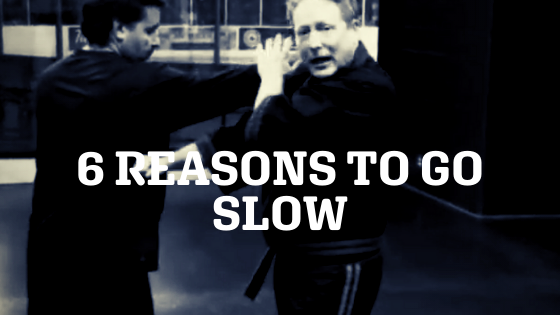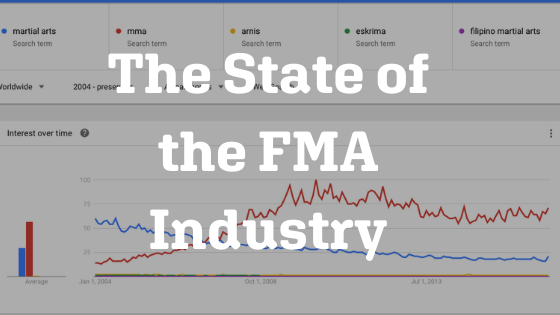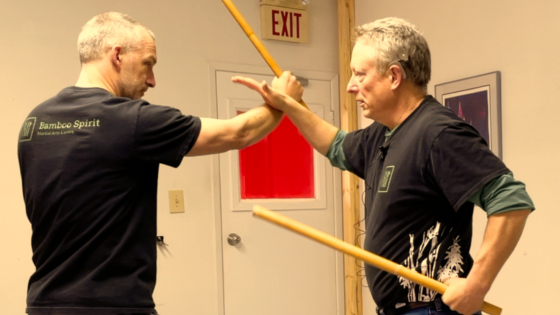“There Are No Superior Styles, Just Superior Fighters.”
Many in the martial arts community have paraphrased the above quote. At the outset, I would have to say that the quote about martial arts styles is essentially on target.
However, a closer examination of this quote reveals a more nuanced understanding of just what that quote is talking about.
Let’s take this quote at face value. Assuming that all martial arts styles are equally well designed, the phrase “there are no superior styles” may be true.
But what if some martial arts styles are better designed than others? To phrase this another way, what if some styles are poorly designed or have poorly constructed curricula?
If that is the case, then the assumption that “there are no superior styles” is incorrect.
I can say from experience that some martial arts styles are poorly designed. For example, I know of one that requires you to learn 30 discrete self-defence techniques per belt level. The curriculum was designed so that you had to know approximately 300 self-defence techniques by the time you tested for shodan.
Very few of these techniques are connected with others. How is the average student expected to use the right technique in a self-defence situation at the right time? I don’t think that’s realistic. This is an example of a poorly designed martial art style.
On the other hand, a well-designed martial art style is one where the techniques and concepts are broken down into easily digestible components and where the material is easy for students to remember.
Easily remembered techniques tend to become instinctual responses, giving the person a greater chance of success in self-defence.
So, I would argue that the idea that there are no superior styles is just bunk. Naturally, it comes down to who designed the system and wrote the curriculum for that particular martial art style. That brings up the topic of the quality of teaching.
For this post, I will separate the curriculum designer from those who teach the curriculum.
As noted above, I believe some styles are inferior to others largely because the curriculum for that style was poorly designed. So, even if you had a superior instructor, you are still stuck with a systemic problem, i.e. the poorly designed curriculum. The superior instructor can sort out and break down the curriculum and alleviate the systemic problem.
The optimal situation is having a superior instructor and a well-designed martial arts curriculum.
Let’s set aside the issue of the poorly designed curriculum or inferior martial arts style. What do we look for, then? We look for quality instruction. Note that the above quote does not explicitly say anything about instruction….only about styles and fighters. I think that it overlooks the role of good instruction.
What if you have a person with average ability coupled with superior instruction? What if someone with exceptional physical skills is paired with a poor instructor? We can speculate about who would prevail in such a confrontation. One thing is for sure….. A person with exceptional physical abilities would fare much better under superior instruction. I think that we can all agree on that.
So, that means the “superior fighter” part of the quote may not be entirely true.
So, what are we talking about here? The key to becoming a good martial artist is having a good instructor, regardless of style. Naturally, the optimal situation is pairing a well-designed martial art style/curriculum with an excellent instructor. But that does not always happen. You may end up with a good instructor in a bad systemic situation, or you can end up with a poor instructor in a well-designed system.
My personal preference is that I would look to see how good the instructor is. What makes a good instructor? My opinion is the following:
(1) The instructor deeply understands what they are teaching. Beware of instructors with only a surface understanding of what is being taught.
(2) The instructor emphasizes the basics/fundamentals of the art. Beware of instructors who teach immediate/advanced materials to beginners.
(3) The instructor breaks down the art’s concepts/techniques into simple, easily digestible components. If you feed them small bites, they will retain the material much more readily than if you were to stuff their brains!
(4) The instructor emphasizes constantly repeating what is being taught. This would encourage a feeling of competency among the students and serve as a building block for the next level.
(5) When correcting a student’s technique, the instructor should focus only on one thing at a time. If the instructor stops a student and gives them five corrections to work on, that will be counter-productive as the student will become confused trying to correct five things at once.
(6) The instructor should focus on two or three themes/concepts/techniques per class. Make it as easy for the students to walk out of the dojo and remember what they worked on in class. I have seen instructors engage in a blitzkrieg style of instruction such that the student would remember very little the next day.
(7) Lastly, there must be a progression from one class to the next. I would often repeat the same material or some variation thereof in the next class so that the students could remember the techniques and gain a feeling of competency. Unfortunately, I have seen instructors teach entirely different things from one class to the next. This leads to confusion and a weakening of the foundation of their martial art.
In closing, the first part of the quote, “There are no superior styles,“ is just plain old bunk. The fact that there are superior fighters rests on a shaky foundation. It may well be true if that fighter has superior instruction.
Conversely, it may not be true when the fighter is paired with a poor instructor.
I have had many conversations with martial artists regarding instruction, and I keep hearing the same assessment over and over…..most instructors do not know how to teach.
Many assume that because they are good at martial arts means that they are good teachers. Nothing could be further from the truth. Teaching is an entirely different skill set and takes years to learn. I have seen 8th-degree black belts who could not teach their way out of a wet bag. I have seen 2nd-degree black belts who are incredible instructors. One would be better off with that incredible 2nd-degree black belt instructor.
Unfortunately, there is an unspoken assumption among many that the higher rank the person is, the better teacher they are. Not true.
- Modern Arnis-What it is and it isn’t
- Friday Recommendation #3
- Breakout Groups Or Not?
- Bamboo Shoots
- Collect Concepts, Not Techniques
Share this post:
- Click to share on Twitter (Opens in new window)
- Click to share on Facebook (Opens in new window)
- Click to share on LinkedIn (Opens in new window)
- Click to share on WhatsApp (Opens in new window)
- Click to share on Nextdoor (Opens in new window)
- Click to share on Pinterest (Opens in new window)
- Click to email a link to a friend (Opens in new window)
Brian Johns
Related Posts
3 Comments
Leave a Reply Cancel reply
Categories
- Arnis/Kali/Eskrima (113)
- Book Review (8)
- DVD Reviews (3)
- Guest Post (4)
- Inspiration (24)
- Martial Arts (99)
- My story (92)
- Safety (14)
- Tips & tricks (6)
- Uncategorized (3)
- YouTube Videos (8)






[…] about when we are not doing curriculum review for upcoming […]
[…] a black belt in a martial art that I was studying. This school emphasized learning close to 300 techniques to obtain a black belt. Even worse was the lack of connections between the […]
[…] “There Are No Superior Styles, Just Superior Fighters.” […]